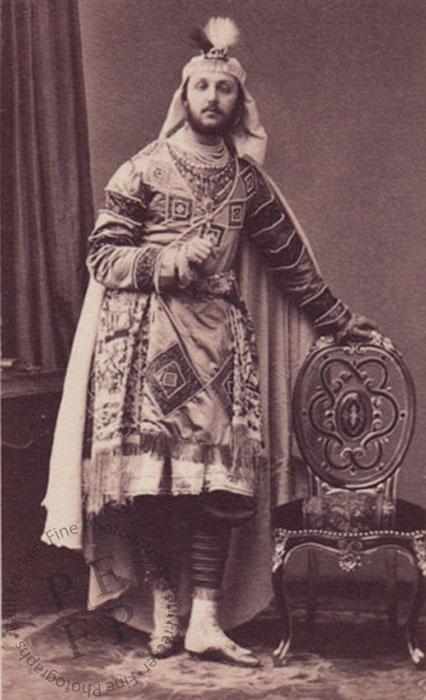Henri de Lutteroth
Henri de Lutteroth was probably the grandson of the Austrian banker Henri de Lutteroth and the son of the historian of French Protestantism, also called Henri de Lutteroth.
The following report appeared in the Belfast Morning News (20 February 1863) under the heading 'Another Fancy Ball in Paris.'
'The fancy ball given by the Princess de Metternich, on Friday night, was of great magnificence. The rooms were ornamented with wonderful taste, and a temporary ball-room, constructed over the garden, was lined with blue satin, studded with camelias. The gallery was not opened until the arrival of their Majesties. The Emperor wore a white Venetian mantle, under which, in compliment to the Austrian Ambassador, was to be seen the Grand Cordon of St Stephen, and the Empress attracted universal attention in the costume of Juno. The Prince and Princess Metternich, accompanied by all the persons belonging to the embassy, received their Majesties on the steps of the hotel, and at once conducted the Imperial guests to the grand gallery, where dancing immediately commenced. In the quadrille of honour, the Emperor danced with the Princess de Metternich and the Empress with the Ambassador. About one o'clock their Majesties put on dominoes and masks. The lady of the house appeared as a Bouquet of Violets, whilst the Prince was a Venetian domino; the Princess Anna Murat represented Early Winter; the Countess Walewska, a Fortune Teller; the Countess de Persigny, a Windmill; the Duchess de Bassano appeared in a Pompadour dress; Madame Decazes-Stackelberg was a Queen of Egypt; Madame de Gortchakoff, the Sea, covered with marine plants, corals, and pearls, of great value; the Duchess de Morny appeared in a costume of Louis XIV; the Countess d'Aoust, as a Bacchanal; the Princess Esterhazy as a Pink; Mademoiselle de Seebach and Madame de Girardin. each as a Myoeotis; Madamc de Pereira as Heartsease; Count de Choiseul appeared as Truth of the Modern Day, a splendid crimson robe stiff with gilding covering wretched tatters; Count Onesime Aguedo [sic] was dressed as "Maria" in the opera of Martha; and M. de Lutteroth as an Indian King. "The Eugenie Quadrille" had the greatest possible success, a number of beautiful young women representing in it each a letter to compose her Majesty's name. About two in the morning a splendid supper was served, and the cotillon did not terminate until five. Their Majesties remained till an usually late hour, and appeared the whole evening in the highest spirits. About 500 persons were present, consisting of the chief celebrities of Paris. The Prince and Princess de Metternich did the honours with an affability, a grace, and a distinction that charmed every guest.'

